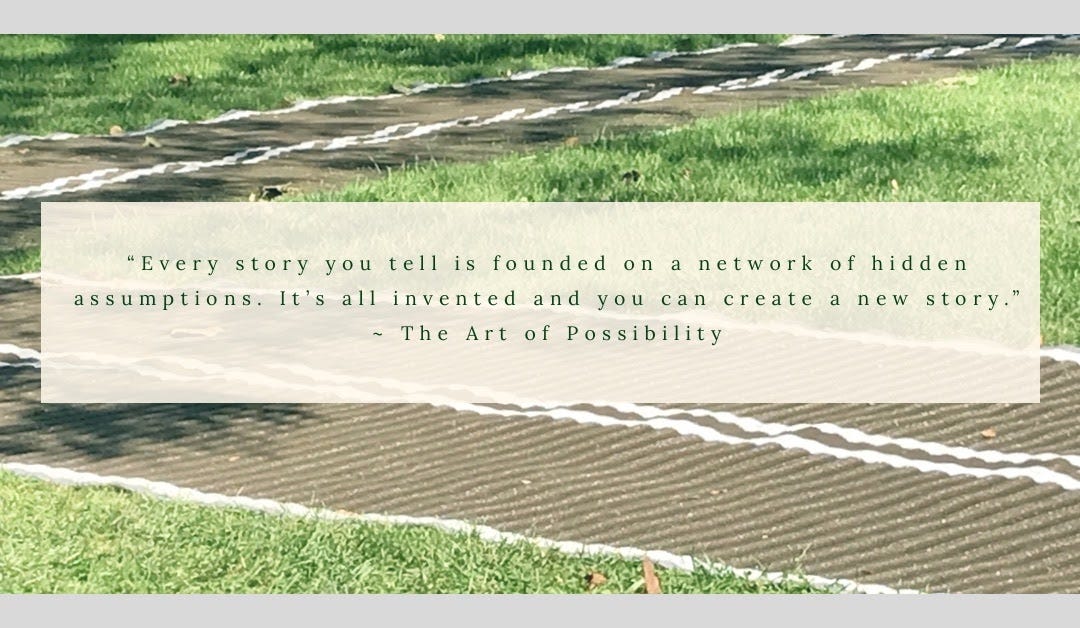For the last three weeks of the seeing clearly project, I’m reflecting on what I’ve learned this year and I hope you will do the same. Last week, we explored the role of the senses through the body in seeing clearly. This week, let’s look at the mind, and especially how our thoughts affect what and how we see.
In David Abram’s book, Becoming Animal: An Earthly Cosmology, he uses the analogy of mind as wind – a whooshing force – that binds all beings. Each of us experiences this force from our own particular place and perspective. Our minds are constantly affected by the dynamic interactions of our everyday life, the constant conversations we’re having with the world around us. Here are a few ways we practiced noticing how our minds worked this year.
Our Conditioned Minds
In a sense, we’re all brainwashed by the past. As we grow, we’re conditioned by our experiences, our environment and culture, and the company we keep. This is perfectly normal, after all, life is not solitary, even if it feels like it is. Our lives are defined by these relationships.
In order to see clearly, it’s important to be aware of habits of thought that can be obstacles to seeing clearly. We can actively work to change those habits that are harmful to ourselves or others or our environment.
This year, we examined how memories are our stories of how things were and they’re often selective, missing important details or context. We practiced ditching our stories, suspending our opinions, judgments, likes and dislikes, if just for a time, and going back to a beginner's mind.
I’ve noticed how the lens through which I see is based on my personal experiences, and may not reflect the experience of others. I’m trying to be open to different perspectives, to see through the eyes of others. I’ve become more practiced at not accepting things at face value and digging a little deeper to the complexity and nuance underneath. I’m learning to say ‘I don’t know’ more often and not to be so quick to offer an opinion.
Attention
Attention, where and how we place it, is one of my favorite subjects. It is how our minds experience the present and it creates our map of reality. William James (Principles of Psychology 1890 via Jenny Odell, How to Do Nothing), defined attention as the ability to hold something before the mind. Yet, our attention often tends to be fleeting; we can easily become bored or distracted. To stay with something requires “actively noticing new things about it,” according to mindfulness researcher Ellen Langer.
Why do we notice certain things and not others? My husband loves to point out things that I miss when we’re out on our walks and when he does, I say thank you. We all see differently and we need each other to see what we’re not seeing. We can never attend to everything. However, we can choose where to place our attention.
This year we practiced doing this by looking closely, as well as far and wide. We also looked to the periphery or edges of our field of view and noticed the edges between things that mark differences. We explored inattentional blindness, or the things we overlook.
As do many others, I can spend too much time attending to screens, which is why daily walks and photography are important practices for me. I’ve learned that in a constantly changing world, my map of reality must be continually updated. Next year, I will spend more time listening and observing, outdoors and in, and depending my relationship with the place where I live.
Seeing Possibilities
With our attention open, curious and without expectations, we can simultaneously notice beauty and experience wonder, while at the same time seeing where things need to change. This can be a space of uncertainty, maybe even bewilderment, but also of possibilities. This is where we activate our imaginations, entertain alternatives, and step into a new vision for the future.
Your Turn
In one of my latest posts on rationality, I asked, how has your map of reality changed? How has awareness of your habits of thought contributed to your seeing more clearly? How do you practice un-conditioning your mind?
Please share in the comments (open to everyone) or on Instagram (add the hashtag #seeingclearly2021).
Resources
Post: Blue Sapphire of the Mind, a book summary
Book: The Art of Possibility by Rosamund and Ben Zander
Podcast: The Science of Mindlessness and Mindfulness with Ellen Langer via On Being




